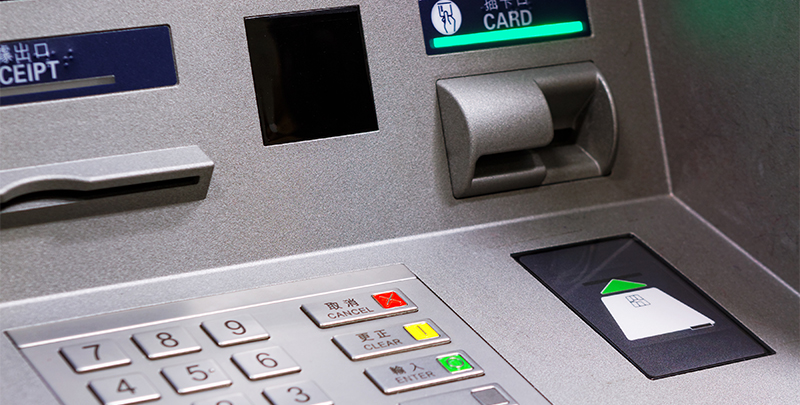What is the withdrawal limit for Savings Account?
3 min read
Feb 21, 2024

Banks set Savings Account withdrawal limits, often in consultation with the RBI, for security and practical reasons. The withdrawal limit for Savings Account varies among banks, making it vital to consider it along with interest rates before opening an account. Knowing about Savings Account withdrawal limits, including their types, reasons, and management strategies, will help better manage your finances.
What are savings withdrawal limits?
Savings withdrawal limits are rules set by financial institutions on how much money you can take out of your Savings Account each time. These limits help banks maintain liquidity and encourage customers to save.
For example, Axis Bank sets a daily ATM withdrawal limit that ranges from ₹20,000 to ₹50,000, depending on the account type and customer profile. These limits can vary for transactions at different ATM branches, with certain premium accounts offering higher withdrawal capabilities.
Types of withdrawal limits
With different withdrawal limits, these are how your funds can be accessed:
- Limit on daily ATM withdrawals: It specifies the maximum cash that can be withdrawn in a single day from an ATM. It is generally set at a lower threshold than the account's total withdrawal capacity. This limit enhances security by minimising potential losses due to theft or unauthorised account access. For instance, a bank might cap ATM withdrawals at ₹25,000 daily.
- Cumulative withdrawal ceiling: It is a cap on the aggregate amount that can be drawn from a Savings Account over a specified period — daily, weekly, or monthly. This is designed to regulate fund outflows and maintain account stability, with variations across different banking institutions reflecting their unique policy frameworks.
Reasons for Withdrawal Limits
Withdrawal limits on Savings Accounts are instituted based on several grounds:
- Compliance with regulations: To adhere to the government's financial directives, banks implement withdrawal limits. These rules help maintain essential liquidity and ensure that the banks have ample reserves to cover depositor demands while meeting capital adequacy standards.
- Deterring fraudulent acts: Setting caps on withdrawals acts as a critical barrier against financial crimes, including unauthorised access, identity theft, and money laundering. Savings Accounts withdrawal limits serve as a precaution, minimising the impact in the unfortunate event of account compromise.
- Promoting financial health: Banks use withdrawal limits as a tool to avert sudden, large-scale fund withdrawals that could threaten their liquidity. This practice is essential for managing cash flow and ensuring ongoing stability.
- Fostering savings culture: Withdrawal limits align with the fundamental purpose of Savings Accounts: to encourage individuals to save. By restricting access to funds, these limits incentivise account holders to let their savings grow over time, benefitting from accumulated interest and developing sound financial habits.
Withdrawal limit on non-branch and branch transactions
Withdrawal limits often differ based on whether transactions are conducted through branch or non-branch channels:
- Branch vs. non-branch: Banks typically allow higher withdrawal limits for branch transactions, acknowledging the added security and verification processes in place. Conversely, non-branch transactions, such as ATMs or online banking, may have lower limits to mitigate risks of unauthorised access.
- Customised limits: Understanding that customer needs vary, some banks offer customisable limits for non-branch transactions, providing flexibility while maintaining security protocols.
Managing withdrawal limits
You can skillfully manage your withdrawal limits, ensuring your banking experience is both flexible and aligned with your financial goals:
- Understanding your account's structure: Acquaint yourself with your Savings Account's specifics, especially regarding withdrawal caps and fees for surpassing withdrawal limits. An in-depth review of your account's terms will arm you with valuable knowledge to make financial decisions.
- Leveraging alternative financial instruments: For transactions exceeding your withdrawal limits, explore other payment avenues like online banking, cheque payments, or digital wallets. Each of these alternatives comes with its set of guidelines, which should be understood beforehand.
- Proactive bank engagement: Should there be a need to access funds beyond the set limit, reaching out to your bank proactively can facilitate for temporary adjustments or alternative arrangements to meet your demands.
- Accounts with enhanced limits: For those regularly needing access to larger sums, a conversation with your bank about transitioning to an account type that offers higher withdrawal thresholds might be beneficial. Assess the associated conditions and fees to ensure they meet your lifestyle.
Also Read: Types of Savings Accounts: Know them all
Conclusion
Efficiently managing the withdrawal limit from your Savings Account is key to optimising your financial health. Staying informed about your account's capabilities allows for smooth financial transactions and maximises the benefits of your savings.
With the Axis Bank Amaze Savings Account, wherein there is no charges on ATM withdrawals. This facilitates ample flexibility for a range of financial needs. This is a zero-balance account with no charges on domestic transactions with an initial funding requirement of just ₹5000 and no average monthly balance requirement. This makes it a smart choice for savvy savers who value both their withdrawals and their rewards equally.
Disclaimer: This article is for information purpose only. The views expressed in this article are personal and do not necessarily constitute the views of Axis Bank Ltd. and its employees. Axis Bank Ltd. and/or the author shall not be responsible for any direct / indirect loss or liability incurred by the reader for taking any financial decisions based on the contents and information. Please consult your financial advisor before making any financial decision.















